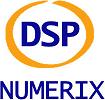
 |
Case Study: Industrial Vibration Monitoring System - Code Review And Technology Training |
Introduction
The customer is a major industry in the Midlands of the United Kingdom. Two years prior to the contract they had engaged a contractor to develop an innovative noise and vibration analysis algorithm for their rotating machines.Review Summary
The original source code was implemented in assembly on an Analog Devices SHARC™ floating point DSP. While the customer had a very good understanding of the SHARC™ architecture, there were optimizations in the code that also needed review, documentation and explanation to the customer.Here is a high level summary of the results of the review:
Service Summary
A bespoke DSP course was prepared for the customer and presented on-site to all engineering team members.References
[1] Oppenheim, A. V. and Schafer, R. W., (1989), "Discrete Time Signal Processing", Prentice-Hall Inc., USA.Copyright© 2024 Delta Numerix.
Permission is granted to create WWW pointers to this document. |